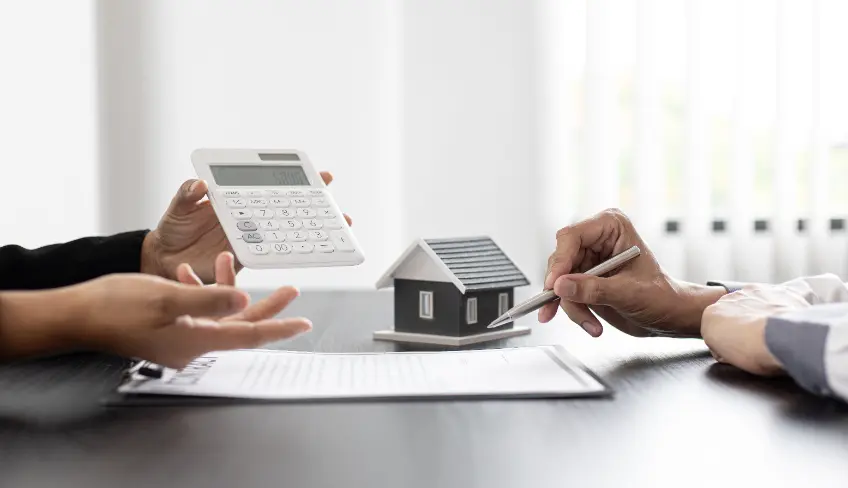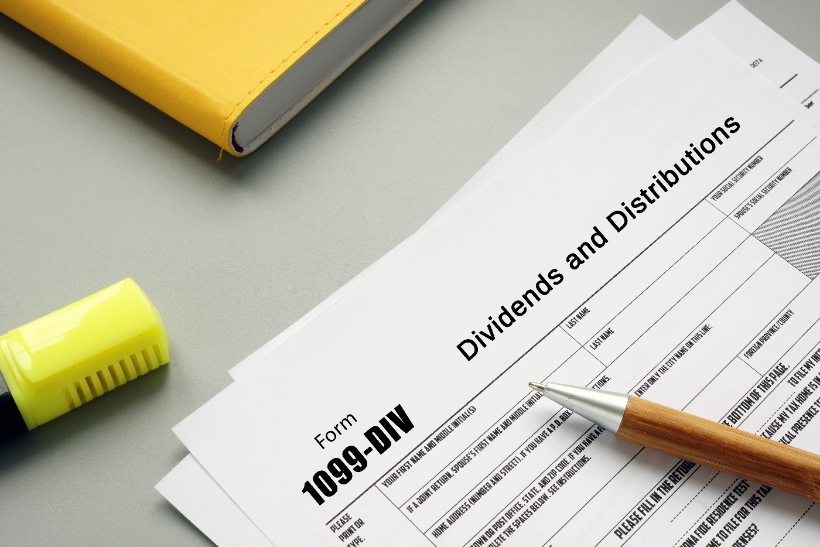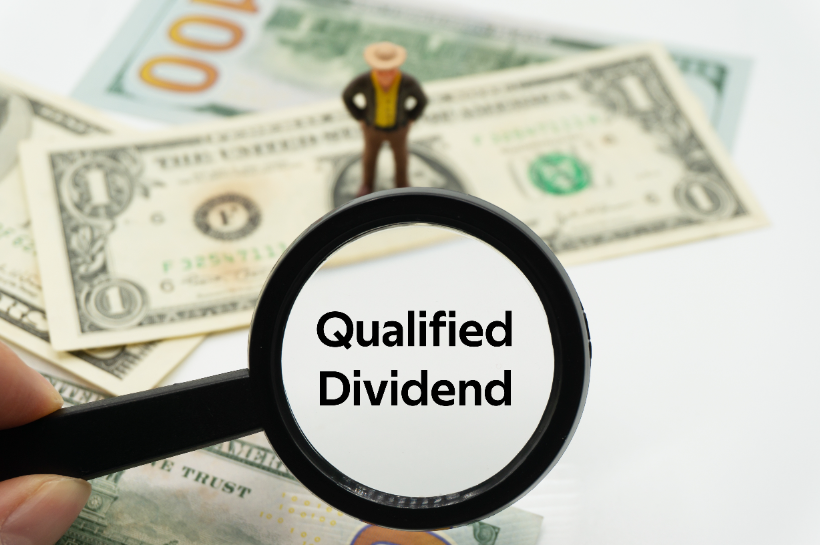Start Here: How Section 1231 Works, How It Relates to Capital Gains, and the Right Way to Report 1231 Property on Your Taxes
Published:
What is Section 1231?
1231 gains overview
Section 1231 of the tax code provides guidance on the treatment of gains and losses derived from the sale or exchange of certain types of property. This section defines “1231 Property” as any depreciable or real property used in a trade or business for more than one year, regardless of the taxpayer’s holding period. Examples of 1231 property include real estate, unharvested crops, and depreciable business property. Net 1231 gain or loss is calculated by subtracting a taxpayer’s 1231 losses from 1231 gains during the tax year. For instance, if an individual has a net 1231 gain, it can be eligible for long-term capital gains rates, which is generally lower than ordinary income tax rate. It is important to understand the difference between Section 1231 and Section 1245 property, as each have their own tax implications. Section 1245 property is generally considered to be any depreciable personal property or other tangible property used in a trade or business. Lastly, Section 1231 transactions refer to the sales or exchanges of capital assets, with gains or losses falling into either short or long-term categories, commensurate with the taxpayer’s holding period.
Definition of “1231 Property”
Section 1231 of the tax code defines “1231 Property” as a specific type of property that is used in a trade or a business and has been held for more than 12 months. This category of property is distinct from other types such as personal property or non-business assets. The tax treatment of 1231 Property pertains to gains or losses derived from the sale or exchange of this property.
Some examples of 1231 Property include real property like a building or land, as well as depreciable property that can be used for business purposes. However, it is important to note that personal property is not considered 1231 Property. Instead, personal property falls under Section 1245, and the tax implications are different.
In addition to real property and depreciable property, other types of qualifying properties include Section 1250 property, which refers to non-residential real estate that has been depreciated. The tax treatment for Section 1250 property is also different from other types of property.
Section 1231 transactions refer to the gain or loss derived from the sale or exchange of 1231 Property. The tax treatment for such transactions is calculated by subtracting the losses from the gains. For taxpayers who have a net gain, the tax treatment may be different compared to those who have a net loss.
In the next section, we will discuss in detail the tax treatment for Section 1231 transactions and how they differ based on the holding period of the property. We will also explore other essential aspects of Section 1231 Property, including how it can impact taxable income and ordinary income tax rates.
Examples of 1231 Property
Examples of 1231 Property are assets used in a trade or business that a taxpayer has held for more than 12 months. Depreciable business assets such as machinery, equipment, buildings, vehicles, and computers are typical examples of 1231 Property. These assets can be depreciated over their useful lives and are often vital to the operation of a business.
Apart from depreciable business assets, non-depreciable assets also qualify for 1231 Property. Examples of non-depreciable assets include land, timber, livestock, and unharvested crops. These assets are necessary for the production of income and used in the normal course of a taxpayer’s trade or business.
It is important to note that inventory or property held for sale to customers do not qualify as 1231 Property as they are not used in a trade or business. Intangible assets such as patents, trademarks, and copyrights are also excluded from 1231 Property.
Definition of “Net 1231 Gain or Loss”
In taxation, the term “Net 1231 Gain or Loss” refers to the profit or loss made from the sale of Section 1231 property. This calculation is essential for taxpayers who own and operate businesses as it determines how gains and losses from the sale of such assets are treated for tax purposes.
To determine the net Section 1231 gain or loss, taxpayers subtract their gains from the sales of Section 1231 property from their losses in the same category. This calculation is derived byadding the gains and losses from the sale of relevant Section 1231 property over a specified period, usually a tax year. If the result is a positive value, then the taxpayer has a net section 1231 gain. Conversely, if it’s a negative value, then the taxpayer has a net section 1231 loss.
For taxpayers, a net section 1231 gain results in long-term capital gains treatment. This means that if the taxpayer has held the asset for more than 12 months, then the gain he collects from the sale of the property will generally qualify for a reduced tax rate compared to ordinary income. On the other hand, a net section 1231 loss is treated as an ordinary loss, which can offset any ordinary income earned by the taxpayer. If the loss is significant enough, it can carry over for up to 20 years to offset future income.
It is essential to note that there are specific rules and guidelines that must be followed when calculating net section 1231 gains or losses. For instance, gains and losses must be separately accounted for, and losses may only offset gains from the sale of Section 1231 property. Additionally, gains from Section 1250 property, like depreciable real estate property, must be excluded from the calculation of net section 1231 gains or losses.
Examples of Net 1231 Gains or Losses
Depreciable business property and real assets that qualify for Section 1231 gains are the focus of this section. For instance, let’s say a taxpayer sells a depreciable business property for $150,000. The property was purchased for $80,000 five years ago and has a $40,000 accumulated depreciation. In this case, the gain is $110,000. If the taxpayer had a loss from the sale of another Section 1231 property for $30,000, then the net Section 1231 gain would be $80,000 ($110,000 gain−$30,000 loss).
In terms of taxation, the net Section 1231 gain described above would be treated as a long-term capital gain. If the property had been held for over a year, the taxpayer may qualify for a lower tax rate on the gain than on ordinary income. Alternatively, a net Section 1231 loss would be treated as an ordinary loss and be used to offset any ordinary income made by the taxpayer. It can be carried forward for up to 20 years to offset future income. This treatment can significantly reduce the taxpayer’s tax obligation.
It should be considered that there are different scenarios where a taxpayer can benefit from Section 1231 gains. When a taxpayer sells real property or depreciable business property, they can either receive ordinary income, long-term capital gains, or lose money on the sale. If they experience a net Section 1231 gain, it can result in tax savings as long-term capital gains are generally taxed at a lower rate than ordinary income.
Depreciation values are what differs between Section 1245 property and Section 1231 property.
While Section 1231 concerns the sale of depreciable business property and real assets that qualify for Section 1231 gains, Section 1245 refers to depreciable personal property used for the production of income. Section 1245 property generally includes equipment, machinery, furniture, and fixtures.
The key difference between the two is how they treat depreciation recapture. When a taxpayer sells Section 1231 property at a gain, only the amount that exceeds the accumulated depreciation is subject to recapture. On the other hand, if a taxpayer sells Section 1245 property for a gain, all of the accumulated depreciation is subject to recapture. This could lead to a much higher tax burden.
When it comes to tax law, understanding the differences between Section 1231 and Section 1245 property can have a significant impact on a taxpayer’s obligations. At their core, these two sections of the Internal Revenue Code deal with the sale of depreciable property. However, there are some important distinctions to be aware of.
Section 1231 applies to property held for more than 12 months, including depreciable business property, as well as buildings and land used for business purposes. If a taxpayer sells a Section 1231 property and receives a gain, it will typically be treated as a long-term capital gain, which is often taxed at a lower rate than ordinary income. On the other hand, if a taxpayer experiences a net Section 1231 loss, it will be treated as an ordinary loss and can be used to offset ordinary income made in the same year or carried forward for up to 20 years to offset future income.
Section 1245, on the other hand, specifically refers to depreciable personal property used for the production of income, such as equipment, machinery, furniture, and fixtures. The key difference between Section 1231 and Section 1245 is how they treat depreciation recapture. When a taxpayer sells Section 1231 property at a gain, only the amount that exceeds the accumulated depreciation is subject to recapture. However, if a taxpayer sells Section 1245 property for a gain, all of the accumulated depreciation is subject to recapture. This could potentially lead to a much larger tax burden.
It’s also worth noting that a property can be classified as both Section 1245 and Section 1250 property, which is a type of real property that has been depreciated.This can have significant tax implications, as the treatment of Section 1231 gains and losses differs from both Section 1245 and Section 1250 property.
The depreciation recapture rules for Section 1245 can result in a larger tax burden, whereas Section 1231 gains are often taxed at a lower rate than ordinary income.
What are Section 1231 Transactions?
Section 1231 transactions are the actual sales or exchanges of 1231 assets. These transactions qualify for preferential tax treatment under IRS regulations.
The types of transactions that can qualify as Section 1231 transactions include the sale or exchange of real property, such as buildings and land used for business purposes, as well as the sale or exchange of personal property used in trade or business, such as equipment, machinery, furniture, and fixtures.
To qualify for preferential treatment, the property must have been held for more than 12 months. Any gain from the sale or exchange of Section 1231 property is treated as long-term capital gain and may be subject to lower tax rates. On the other hand, any loss from the sale or exchange of Section 1231 property is treated as an ordinary loss and can be used to offset ordinary income.
Section 1231 property is similar to Section 1245 property and Section 1250 property, but there are differences. Section 1245 property refers to depreciable personal property that is used for the production of income, while Section 1250 property refers to real property, such as buildings, that is subject to depreciation. If a property falls under both Section 1245 and Section 1250, it may also qualify as Section 1231 property if it is held for more than 12 months.
Depreciable Business Property and Depreciation Recapture
Depreciable business property refers to assets used in trade or business that wear down, deteriorate, or lose value over time. To account for this decrease in value, businesses can claim depreciation deductions on their tax returns. However, when the property is sold or disposed of, depreciation recapture rules come into play. Depreciation recapture is the process of including some or all of the gain from the sale or exchange of depreciable business property in taxable income, to the extent that the depreciation deductions previously claimed on the property offset ordinary income.
Tax Treatment for Depreciable Business Property and Depreciation Recapture
Depreciable business property, including assets such as buildings, machinery, and vehicles, can provide businesses with valuable tax benefits through depreciation deductions. However, when these assets are sold or disposed of, special tax rules known as depreciation recapture apply.
Depreciation recapture is the process of including some or all of the gain from the sale or exchange of depreciable business property in taxable income, to the extent that the depreciation deductions previously claimed on the property offset ordinary income. The recapture amount is taxed at a higher rate, up to 25%, than the rate for long-term capital gains, which is generally 15%.
To determine the amount of depreciation recapture, businesses must calculate the difference between the asset’s adjusted basis (i.e. the original cost of the asset plus any improvements, minus any depreciation deductions already taken) and the sale price or fair market value at the time of disposition. However, not all businesses may be subject to depreciation recapture, particularly if they sell the asset for less than its adjusted basis.
Depreciable business property can also be relevant for tax purposes under section 1231 of the Internal Revenue Code. This section generally pertains to the sale or exchange of property used in a trade or business, and it provides favorable tax treatment for gains. Net section 1231 gains are treated as long-term capital gains, while net section 1231 losses are treated as ordinary losses.
For purposes of section 1231, depreciable business property includes not only tangible assets like buildings and machinery, but also intangible assets like patents and copyrights. However, some types of property may be excluded from section 1231 treatment, including property held primarily for sale to customers or property used in a personal capacity.
The IRS provides methods for calculating depreciation deductions, including straight-line depreciation. Straight-line depreciation allows businesses to deduct a fixed amount of the asset’s cost each year over its useful life. In addition, the IRS provides an allowance for depreciation, which is a partial deduction for the cost of the asset that can be taken in the year the asset is placed in service.
How do I report Section 1231 gains?
When it comes to filing taxes, reporting section 1231 gain is an important step for businesses that have sold or exchanged property used in their trade or business. In order to report section 1231 gain correctly, the appropriate tax form to use is Form 4797, Sales of Business Property.
Along with the tax form, additional documentation may be required, such as records of the sale or exchange and details about the property sold or exchanged. Businesses should ensure they have all necessary documentation before filing their taxes to avoid errors or omissions.
To be eligible for reporting section 1231 gain, the property must have been used in a trade or business, and the gain must come from the sale or exchange of a depreciated asset. Failure to report section 1231 gain correctly can lead to consequences such as penalties and interest charges.
The tax rates that apply to section 1231 gain are different from standard income tax rates. Net section 1231 gains are treated as long-term capital gains and are subject to a maximum tax rate of 20%. However, any “non-recaptured net section 1231 losses” are treated as ordinary losses, which are subject to ordinary income tax rates.
Production of Income, Sporting Purposes, Exchanges, etc.
Section 1231 of the tax code encompasses a variety of situations and transactions related to the sale or exchange of property used in a trade or business. One such situation is the production of income. If a property has been used to produce income, such as rental income from real property or income from oil and gas leases, any gains from the sale or exchange of that property may qualify as section 1231 gains.
Another example is the use of property for sporting purposes. If a business uses property for sporting purposes such as golf courses, ski resorts, or hunting lodges, and then sells or exchanges that property, any gains may qualify as section 1231 gains. However, it is important to note that any personal use of the property may affect eligibility for section 1231 treatment.
In addition to the two situations mentioned above, the tax code also addresses exchanges of property used in a trade or business under Section 1031. If a business exchanges one property for another and both properties are used in a trade or business, the exchange may qualify for section 1231 treatment. However, strict rules apply, and businesses should consult with a tax advisor before attempting a Section 1031 exchange.
It is worth noting that section 1231 also covers non-casualty gains, which are gains from the sale or exchange of property that do not involve casualty or theft. These gains are also treated as long-term capital gains and subject to the same tax rates as section 1231 gains.



